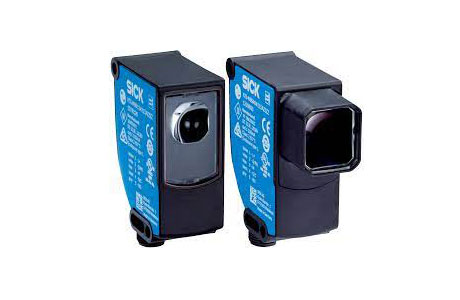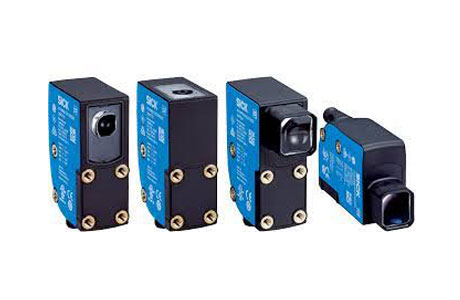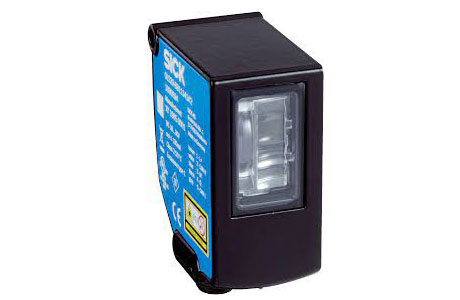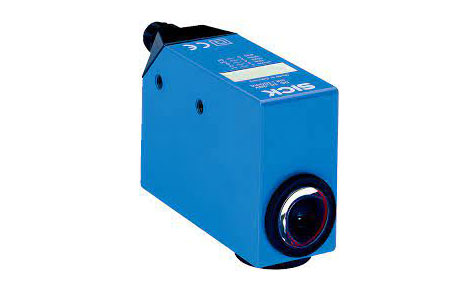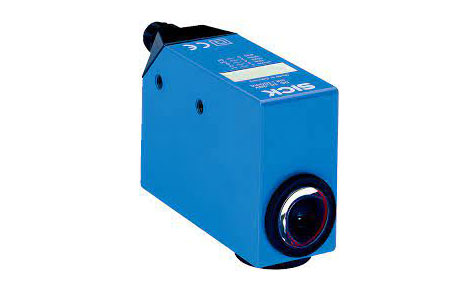Sick Contrast Sensor: Contrast Sensors KTX, KT5
Are you searching for Sick Contrast Sensor? then you are in the right place we are offering some range of Sick KTS, Sick KTX Sensor, Sick KTM Sensor and for some range of Sick Sensors. We can assure our prices are better than Authorized Sick Contrast Dealers or Sick Contrast Sensors distributors in Bangalore, Pondicherry, Chennai, Coimbatore, Hyderabad, and Pan India.
Sick Contrast Sensor: KTS Series
- RGB Technology: For optimal detection performance.
- Switching Frequency: Up to 70 kHz.
- Jitter: Minimal at 3 µs.
- Color Mode: Integrated for complex color detection.
- IO-Link: For diagnostics, visualization, and format changes.
- Compact Design: Space-saving and efficient.
Sick Contrast Sensor KTX
- TwinEye-Technology: Enhanced performance on glossy or fluttery materials.
- Switching Frequency: 50 kHz with a jitter of 5 μs.
- Dynamic Range: Large, for reliable detection on glossy materials.
- Display: 7-segment display.
- Color Mode: Integrated for stable detection of complex color differences.
- Response Time: 10 µs for accurate contrast detection at high speeds.
Sick Contrast Sensors: OLS Series
- Luminescence Technology: For optical line guidance.
- Reading Field: 180 mm, capable of reading up to 3 lanes.
- Curve Radii: Handles small curve radii up to 0.5 m.
- Bar Code Reading: Ability to read 1D codes for route information.
- Interfaces: CANopen, RS-485, or IO-Link; Measurement Accuracy: ± 1 mm.
- Signal-to-Noise Ratio: Very high (~1:1,000).
Sick Contrast Sensor KT8
- Laser Technology: Precise laser for detecting small contrast marks and objects.
- Sensing Range: From 30 mm to 800 mm.
- Light Spot Size: Very small and precise, suitable for detecting tiny elements.
- Switching Frequency: High, at 17 kHz.
- Display: Includes a control panel for detection reliability.
- Laser Class: Class 2 laser for precision.
Sick Contrast Sensor KT5
- RGB LED Technology: Ensures best contrast resolution.
- Sensing Distances: Options of 10 mm, 20 mm, 40 mm, 50 mm, and 200 mm.
- Switching Frequency: 10 kHz.
- Display: 10-segment bar for detection reliability.
- Connection Type: M12 connector, rotatable by 90°.
- Light Spot Directions: Various options for flexible integration.
Product List:
| Model No | Image | Dimensions (W x H x D) | Sensing distance | Light source | Light spot size | Switching output |
|---|---|---|---|---|---|---|
| KTX-WB9124225AZZZZ | 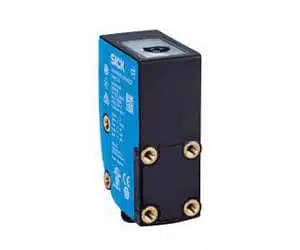 |
30 mm x 53 mm x 78.5 mm | ≤ 25 mm | LED, RGB | 1.2 mm x 5.3 mm | Push-pull: PNP/NPN |
| KTM-MP31182P | 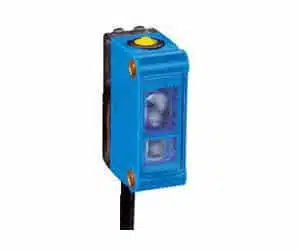 |
12 mm x 31.5 mm x 21 mm | ≤ 12.5 mm | LED, white | Ø 2 mm (12.5 mm) | PNP |
| KT5W-2P1116 | 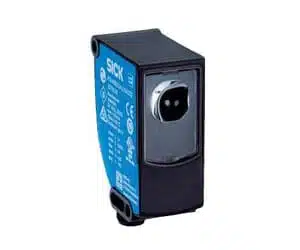 |
30.4 mm x 53 mm x 80 mm | ≤ 10 mm | LED, RGB | 1.2 mm x 4.2 mm | PNP |
| KT8L-N3756 | 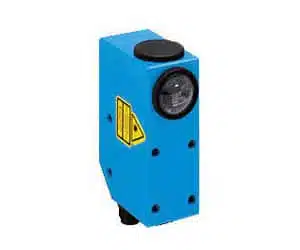 |
30.4 mm x 53 mm x 80 mm | ≤ 150 mm | Laser, red | Ø 3 mm | NPN |
Frequently Asked Questions
What Does a Contrast Sensor Do?
A contrast sensor detects and differentiates between varying shades of light and dark colors on materials. It works by emitting light onto a surface and measuring the reflected light intensity.
This capability is crucial in applications like packaging, where it ensures accurate alignment and positioning of materials with contrasting colors, enhancing precision in automation processes.
What is the Difference Between a Color Sensor and a Contrast Sensor?
The difference between a color sensor and a contrast sensor lies in their detection capabilities. A color sensor identifies and differentiates specific colors by analyzing the light reflected from an object.
In contrast, a contrast sensor detects the intensity of light reflected, distinguishing between varying shades and contrasts, rather than specific colors, to identify marks or features.
What Does Contrast Show in Imaging?
In imaging, contrast shows the difference in luminance or color, making objects distinguishable. High contrast means a greater difference between light and dark areas, enhancing visibility of details. Low contrast results in a flatter, less defined image.
Contrast is crucial for clarity, depth perception, and defining shapes and textures in an image.
Contrast Sensor Working Principle
These sensors are ideal for identifying marks, labels, or color differences on objects. They’re widely used in packaging and printing, where detecting registration marks or print quality is crucial. The sensor’s sensitivity can be adjusted for accurate detection based on the application.
If you require Sick Contrast Sensor, Get a Call: at +91 79955 44066

